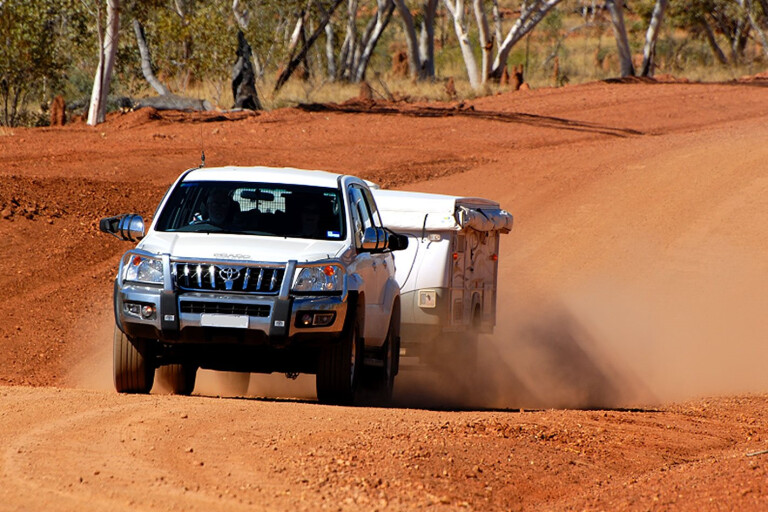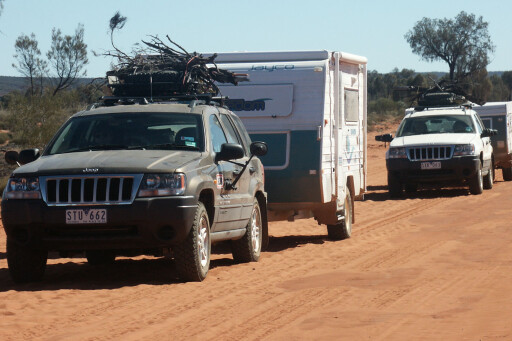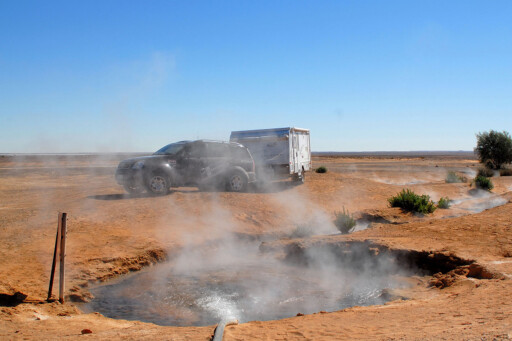
NO MATTER what weight you’re towing, or what you’re towing with, having the right set-up will help take the stress out of your next trip. So before hitting the road, here are seven key areas to consider when pulling a load.
1. TOWING REQUIREMENTS
Consider if your towing set-up is right for your trip and destination. Do you want to take the family down the Great Ocean Road, or hit 4WD tracks on the way to Cape York?
2. VEHICLE LIMITATIONS
Before you choose what type of trailer, camper trailer or caravan to take, you need to understand the maximum tow rating of your vehicle.
How to get the most out of your 2017 tax write off
Tow ratings may change with each variant of a vehicle. For example, a diesel can have a higher tow rating than a petrol option. These ratings can also change depending on what weight you’re towing.
 A 2009 Mitsubishi Pajero has a maximum tow rating of 3000kg, with a 250kg tow-ball load. However, the tow-ball load rating decreases to 180kg when towing a trailer weighing more than 2500kg.
A 2009 Mitsubishi Pajero has a maximum tow rating of 3000kg, with a 250kg tow-ball load. However, the tow-ball load rating decreases to 180kg when towing a trailer weighing more than 2500kg.
3. THE RIGHT EQUIPMENT
Brake Controller: If your tow exceeds 750kg, it’s a legal requirement that trailer brakes are fitted. The most common are electric or electric-over-hydraulic brakes. Powered through the trailer plug, each requires a brake controller to adjust the voltage sent to the trailer brakes. For an easy option, the Hayman Reese Compact IQ and Tekonsha P2 and P3 brake controllers are equipped to handle both styles of brakes and are approved to work with ESC and DSC.
2017 Ford Everest Trend Tow Test Video Review
Breakaway Systems: When a trailer exceeds 2000kg, a breakaway system must be installed. This system applies the electric trailer brakes for at least 15 minutes in the event of a disconnection. The Tekonsha push-to-test breakaway kit is an easy-to-use system.
Towbar: A common style of towbar is the heavy duty 50x50mm hitch receiver by Hayman Reese. All Hayman Reese towbars include a lifetime warranty.

These monitors indicate visually and audibly if a breakaway battery is at low charge or flat. The Hayman Reese SmartCheck system monitors up to four batteries, without being intrusive on the dash. The wireless system plugs into a 12V socket, and is easy to install.
Tow ratings are just marketing hype
Towing Mirrors: If you can’t see a trailer’s rear corners, you must, by law, extend or add mirrors like the door-mounted Hayman Reese Caravan Mirror.
4. WEIGHT DISTRIBUTION
When connecting a caravan, more weight is placed on a car’s rear axles. This can increase fuel consumption, cause uneven tyre wear, reduce braking response and make headlights shine upwards. Properly fitted weight distribution restores the natural balance of a car to improve handling, control and comfort.
 Choosing the right kit depends on the position of the coupling, height of the a-frame, trailer tow-ball load, and the height of the tow ball. Hayman Reese has developed three different styles of weight distribution, with five different weight ranges to cover all towing set-ups.
Choosing the right kit depends on the position of the coupling, height of the a-frame, trailer tow-ball load, and the height of the tow ball. Hayman Reese has developed three different styles of weight distribution, with five different weight ranges to cover all towing set-ups.
5. REDUCE THE LIKELIHOOD OF TRAILER SWAY
As a general rule when towing, you need to decrease speed and ensure you apply the accelerator or brakes smoothly. Also consider the affects of passing traffic, cross winds and uneven road surfaces.
12-volt air compressor comparison
Many systems can reduce the likelihood of trailer sway, and most new camper trailers and caravans are fitted with ESC and DSC. Hayman Reese friction and dual cam sway controllers integrate with weight distribution and prevent trailer sway before it occurs.
6. HITTING THE ROAD
If you load the trailer too heavy at the front, you will increase the tow-ball load; if you put too much weight in the back you can reduce stability and increase sway. Where possible, load your trailer as evenly as possible and keep the heavier items in the middle, placed on top of the axles.
 Another consideration is the location of water tanks, jerry can holders and gas bottle holders. Where possible, tow with a full water tank, as this will lower the trailer’s centre of gravity
Another consideration is the location of water tanks, jerry can holders and gas bottle holders. Where possible, tow with a full water tank, as this will lower the trailer’s centre of gravity
7. STAY SAFE
Keep at least 60 metres between you and the car ahead, as braking responsiveness is decreased. When towing, a turning circle increases and you require more space when changing lanes or overtaking. Factor in more breaks, as drivers experience more fatigue when towing.

COMMENTS